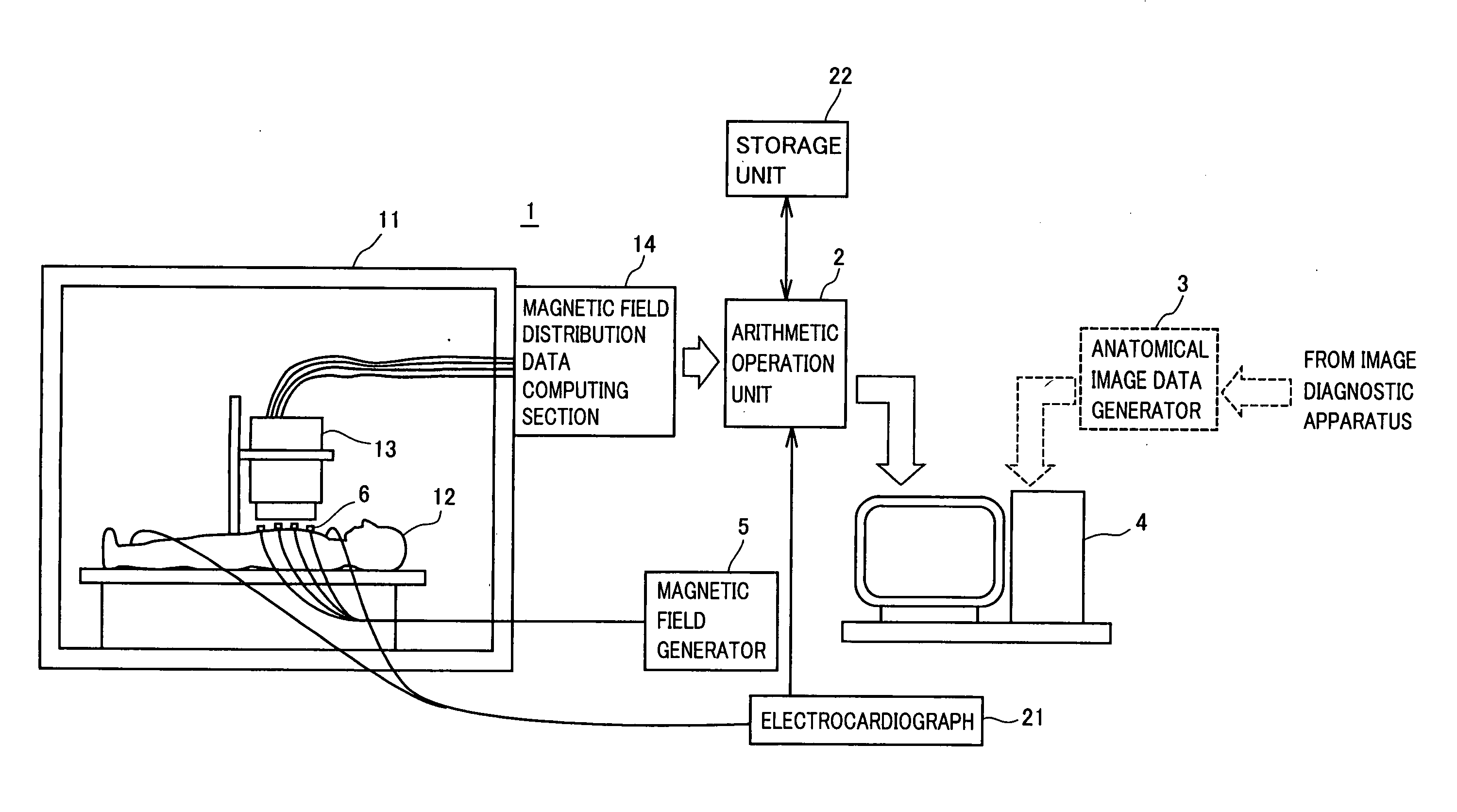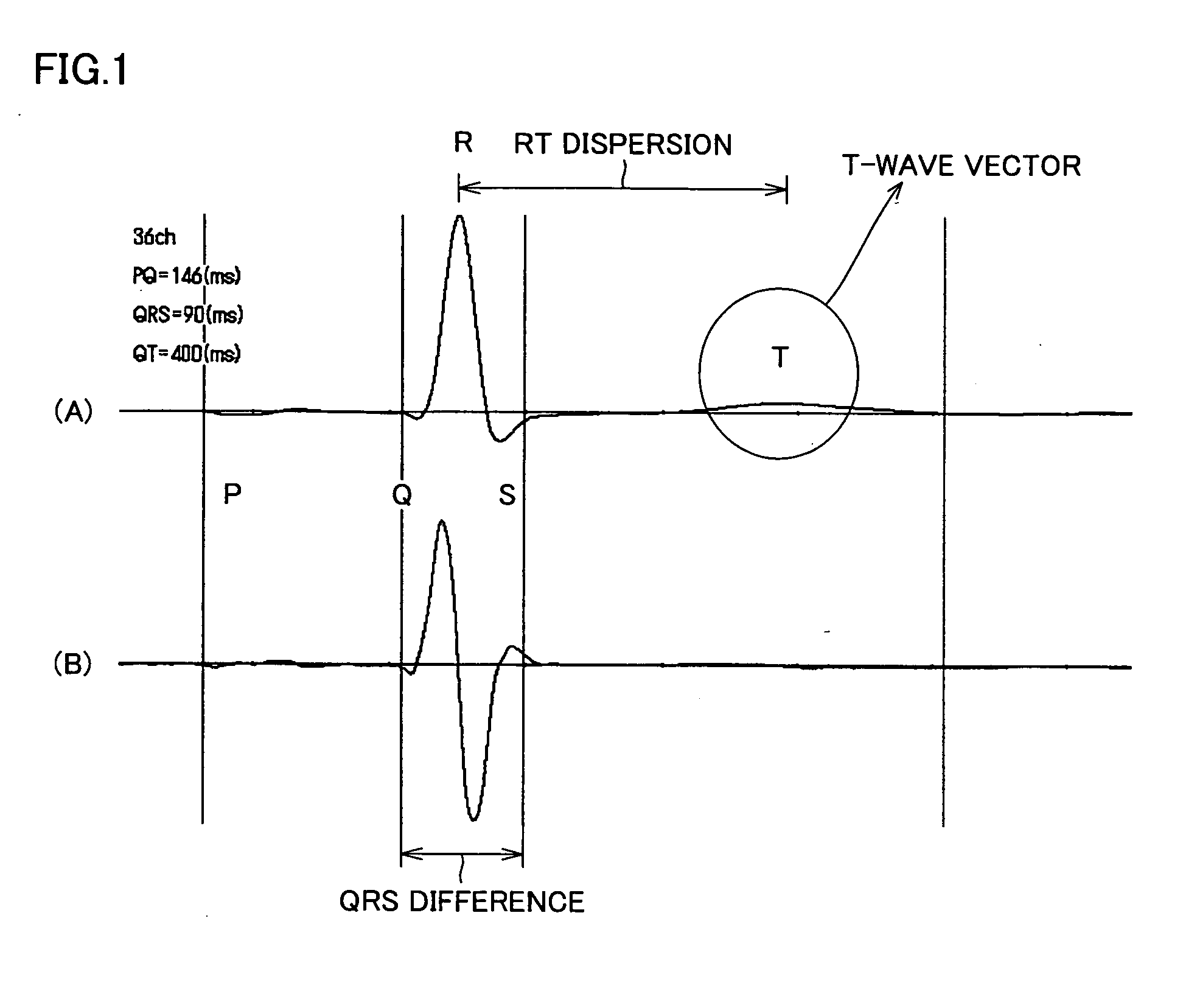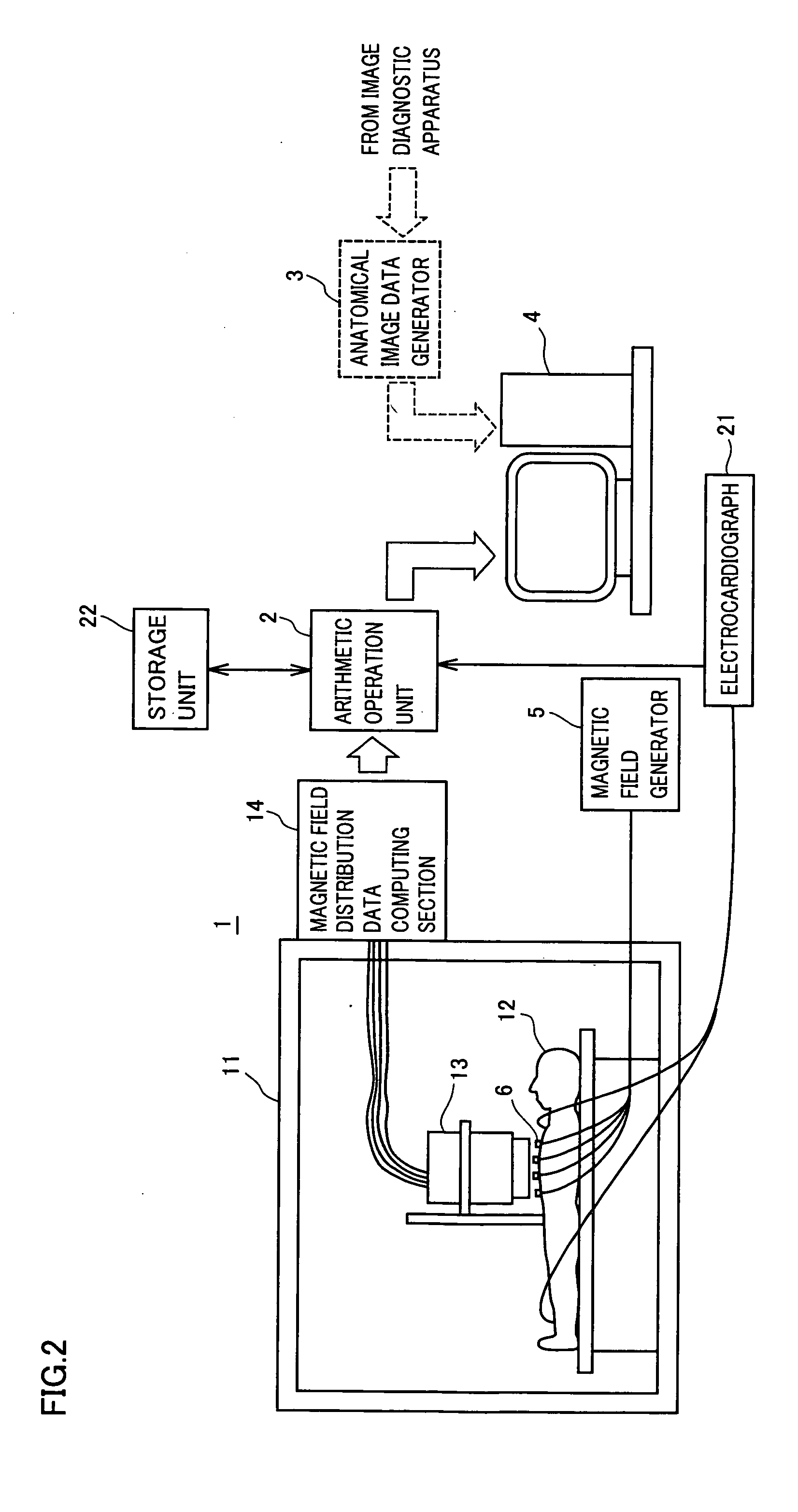Cardiac Magnetic Field Diagnostic Apparatus and Evaluating Method of Three-Dimensional Localization of Myocardial Injury
a diagnostic apparatus and magnetic field technology, applied in the field of cardiac magnetic field diagnostic apparatus and an evaluation method of three-dimensional localization of myocardial injury, can solve the problems of invading the living body, and the inability of conventional diagnostic methods to display the absolute position of myocardial injury on the three-dimensional spa
- Summary
- Abstract
- Description
- Claims
- Application Information
AI Technical Summary
Benefits of technology
Problems solved by technology
Method used
Image
Examples
first embodiment
[0144] According to a first embodiment of the present invention, the QRS difference of magnetocardiography can be three-dimensionally displayed, thereby enabling the three-dimensional localization of a myocardial injury.
[0145]FIG. 1 is a waveform diagram showing actual waveforms of the magnetocardiography. Referring to FIG. 1, a description will be given of the principle of the first embodiment of the present invention.
[0146] In the actual waveforms of the magnetocardiography shown in FIG. 1, a waveform (A) corresponds to an actual waveform diagram of each channel of a cardiac magnetic-field measured with an SQUID fluxmeter, and a waveform (B) corresponds to a waveform diagram showing the QRS difference, which will be described later.
[0147] As mentioned above, the QRS waves reflect a cardiac electromotive force, and it is identified that the cardiac electromotive force is reduced at the portion where the myocardial injury such as cardiac infarction is caused. Therefore, three-dim...
second embodiment
[0248] According to the second embodiment of the present invention, the T-wave vector of the magnetocardiography can be three-dimensionally displayed, thereby enabling the determination of the three-dimensional spatial localization of the myocardial injury. Hereinbelow, the principle according to the second embodiment of the present invention will be described.
[0249] Referring back to FIG. 1, the actual waveform of the cardiac magnetic-field in (A) includes the T waves. As mentioned above, the T waves reflect the repolarization of the myocardium (particularly, the direction of repolarization). In the case of the healthy individual, the current vector of the QRS waves and the current vector of the T waves are in the same direction (approximately 45 degrees at the average of the healthy individual).
[0250] On the other hand, if the myocardium is damaged, the current vector of the T waves variously changes and, particularly, at the infarcted myocardium, it is just in the opposite dire...
third embodiment
[0281] According to the second embodiment of the present invention, the RT-dispersion of the magnetocardiography can be three-dimensionally displayed, thereby enabling the determination of the three-dimensional spatial localization of the myocardial injury. Hereinbelow, the principle according to the third embodiment of the present invention will be described.
[0282] Referring again to FIG. 1, the actual waveform of the cardiac magnetic-field in (A) includes R waves and T waves. As mentioned above, the RT time serving as the interval between the R waves and the T waves reflects the repolarization time of the myocardium. Further, in the case of the healthy individual, the repolarization time is approximately equal, and corresponds to the time fluctuation of the repolarization between the maximum time and the minimum time, that is, the RT-dispersion is 20 ms to 40 ms.
[0283] On the other hand, if the myocardium is damaged, the RT-dispersion, serving as the time difference of the repol...
PUM
 Login to View More
Login to View More Abstract
Description
Claims
Application Information
 Login to View More
Login to View More - R&D
- Intellectual Property
- Life Sciences
- Materials
- Tech Scout
- Unparalleled Data Quality
- Higher Quality Content
- 60% Fewer Hallucinations
Browse by: Latest US Patents, China's latest patents, Technical Efficacy Thesaurus, Application Domain, Technology Topic, Popular Technical Reports.
© 2025 PatSnap. All rights reserved.Legal|Privacy policy|Modern Slavery Act Transparency Statement|Sitemap|About US| Contact US: help@patsnap.com



